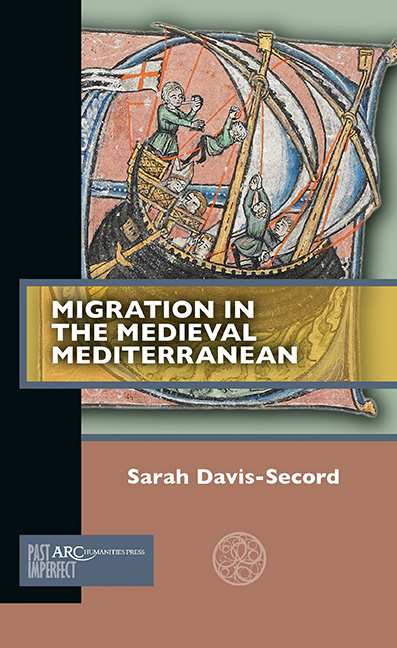Book contents
- Frontmatter
- Contents
- Introduction
- Chapter 1 Refugees from the Islamic Conquests
- Chapter 2 Hadrian and Theodore
- Chapter 3 St. Elias the Younger
- Chapter 4 Constantine the African
- Chapter 5 Jewish Refugees from the Norman Invasion
- Chapter 6 Merchants
- Chapter 7 Imam al-Mazari and Other Muslim Scholars
- Chapter 8 Unnamed Sicilian Girl
- Chapter 9 George of Antioch and Other Immigrants to Sicily
- Chapter 10 Moses Maimonides
- Chapter 11 Religious Converts
- Conclusion
- Further Reading
Chapter 11 - Religious Converts
Published online by Cambridge University Press: 13 January 2022
- Frontmatter
- Contents
- Introduction
- Chapter 1 Refugees from the Islamic Conquests
- Chapter 2 Hadrian and Theodore
- Chapter 3 St. Elias the Younger
- Chapter 4 Constantine the African
- Chapter 5 Jewish Refugees from the Norman Invasion
- Chapter 6 Merchants
- Chapter 7 Imam al-Mazari and Other Muslim Scholars
- Chapter 8 Unnamed Sicilian Girl
- Chapter 9 George of Antioch and Other Immigrants to Sicily
- Chapter 10 Moses Maimonides
- Chapter 11 Religious Converts
- Conclusion
- Further Reading
Summary
In contrast to Maimonides and other migrants who moved in order to safeguard their religious, linguistic, or cultural traditions after a regime change, some others migrated because they personally had changed religions when their community had not. The European Middle Ages was a time when religious identity was a predominant part of public culture, and religion was often used as a homogenizing force, employed to exclude or marginalize members of the non-dominant culture. Conversion from one religion to another was not in any sense a rare event in the premodern world, but for the most part those conversions were linked to large-scale demographic changes after a territorial conquest by rulers of a different religion. And, unfortunately for historians, most of these population shifts from one religion to another are nearly invisible in the historical record.
For many among the masses of people who slowly, or even quite rapidly, changed religions after a major conquest event, we may assume that the goal of belonging to the dominant language and culture was as important to their decision-making process as was belief in the tenets of the faith. There were others, however, who changed religions in directions that challenged the dominant culture, presumably as an act of faith and defiance, but sometimes also as a result of marriage: typically, women would have been expected to convert upon marriage to a member of a different religious community, while men were not. This may have been the main fear of the family of the Sicilian Muslim girl—that she would marry a Christian man and thus be expected to leave the community of Islam. And sometimes a religious conversion could prove to be dangerous, as we have already seen in the case of the elite Spanish Christian woman who converted to Judaism and ended up destitute after her family was attacked, her rabbi husband killed, and her children abducted.
Much like that woman and her family—who fled her hometown because they feared violence from her family after her conversion and marriage—many converts migrated out of fear. They might fear the social repercussions of their choice, or fear for their lives. But others made the decision to migrate so that they could be closer to communities of the faithful in their new religion.
- Type
- Chapter
- Information
- Migration in the Medieval Mediterranean , pp. 95 - 102Publisher: Amsterdam University PressPrint publication year: 2021



